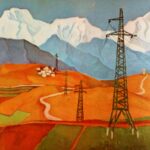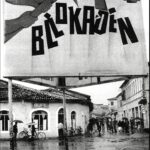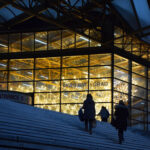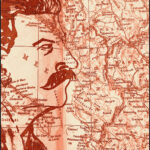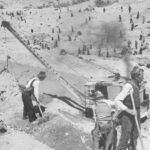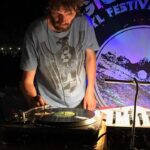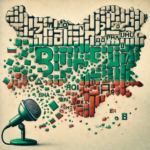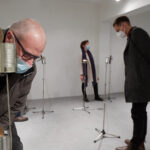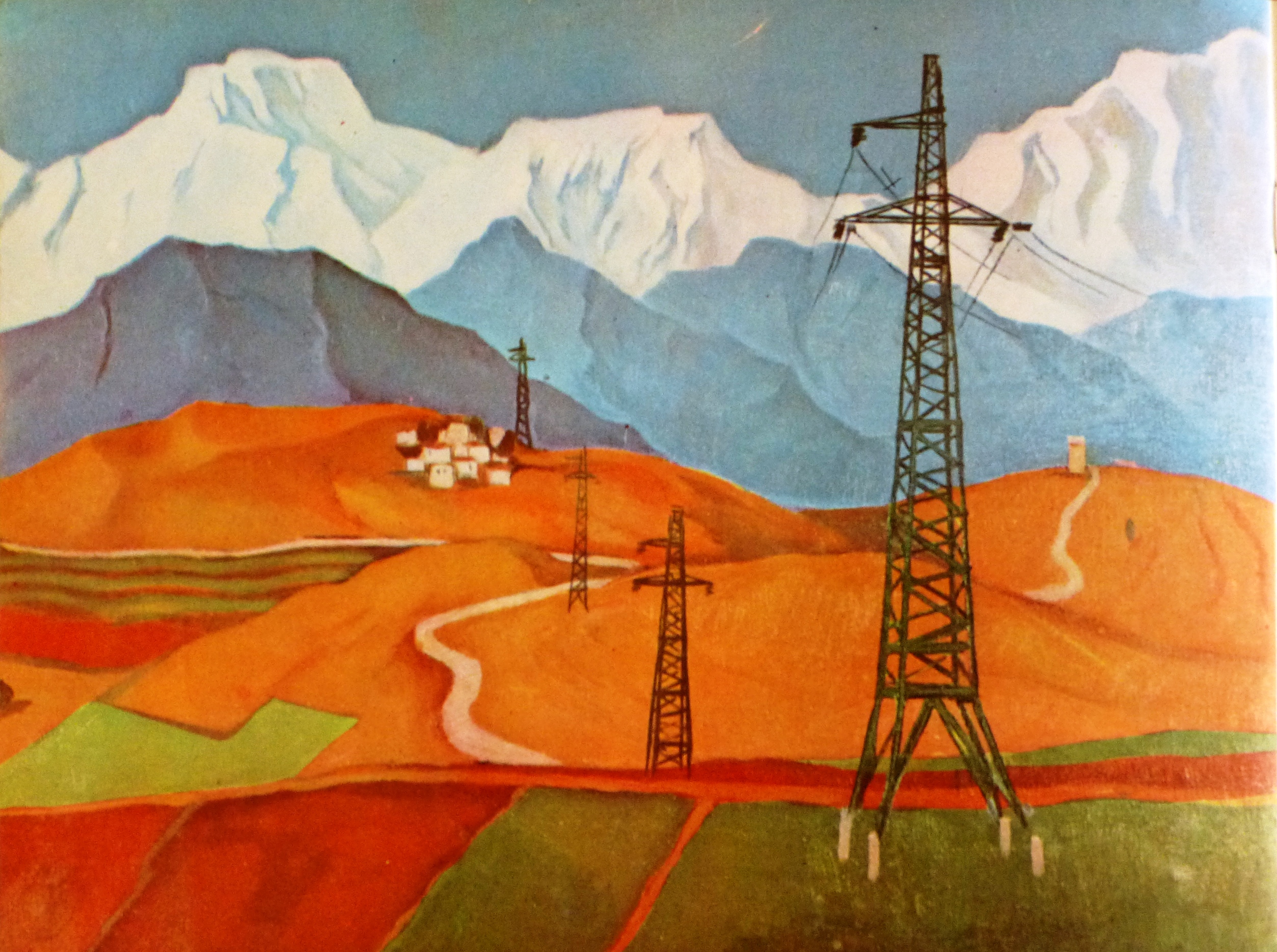Wind of Change?
Academic and Artistic Perspectives on Experiences of Change in Southeast Europe
The International Academic Week 2023 aimed to explore and analyze recent change in Southeast Europe along three dimensions: (1) the political, economic, and social pathways of transition (representing the macro level); (2) the perceptions and (embodied) experiences of induced dynamics on an individual or collective basis (representing the micro level); (3) the reproduction and reflection in media, music, and visual arts, i.e. the rhetoric and practice of related phenomena. These dimensions related to three major scales: space, time and culture which allowed for a diachronic and comparative analysis. For reasons detailed below, we refer to this phenomenon as change·transformation·transition and in the symposium, we adopted an interdisciplinary, open, and innovative platform that incorporated diachronic perspectives on space, society, arts, and culture beyond national or ethnic histories. The primary temporal focus of our discussions was the second half of the 20th and early 21st century. As we addressed an audience of scholars from a wide range of interdisciplinary fields, including political, social, and economic sciences, geography, history, anthropology, and communication, media and sound studies, central questions emerged: What are we talking about when referring to „change“? What are the different meanings and interpretations of change, transformation, and transition? How can we attend to change·transformation·transition and what kind of embeddedness can we afford? In our search for answers, we aimed to overcome authoritative academic voices by shifting away from propositional and prescriptive monologues towards open-ended collective conversations.
change·transformation·transition
To understand the phenomenon of change·transformation·transition from a socio-spatial perspective, an examination of the meaning of these terms across different languages is warranted. While „Transformation“ is common in German, English typically uses „transition“, and Slavic languages favor „change“ – peremena (Rimaševskaja 1999) or perechodny period (Zubarevič 2003). These terms are often used synonymously but their meanings can differ slightly. The German term “Transformation” reminds of an electrical device, a transformer, that converts voltage immediately by operating a switch. In contrast, “change” and “transition” refer to longer-lasting processes in which the beginning is usually identifiable, but the end is not necessarily clear. To give an example from a formal point of view that represents the perspective of politics and law, German Reunification started on Oct. 3, 1990, at midnight; the switch was the implementation of a new regulatory framework in Eastern Germany. However, with regard to cultural or social spheres, the process of transition—the adaptation of these new “rules of the game” by all involved actors (Schwanitz 1997) — has not yet been completed. This spatial-temporal fluidity is also a central concept in Geographic Migration and Transition Studies, which was a central topic as it is a focus of one of the organizers and contributors.
With respect to Geographic Migration and Transition Studies, we took both a sectoral and a spatial approach. The first approach involves scrutinizing relevant economic, social, political, and cultural phenomena, primarily in East and Southeast Europe with a concentration on post-socialist countries and post-communist societies. The second approach involves employing a lens that spans local, regional, national, and even global levels. Geographies of Transition highlight spatial differentiations such as urban versus rural or center versus periphery. Practices such as informality—defined, for example, as the daily practices of individuals—may play a crucial role in certain contexts. Path-dependencies, understood as long-term persistencies (Stark 1992), often serve as key explanations in economic sciences, to name just a few of the approaches identified through the socio-spatial lens (Grabher and Stark 1998).
The contributions on this website address these different dimensions and include critical approaches to ideas on development and modernization in both rural and urban areas. For example, the idea of the road as an infrastructural project of change·transformation·transition, with the promise of connectivity has been heavily criticized by Dalakoglou (2017). In a similar vein Critical Heritage Studies have been cautious about the transformative dimension of architecture (Čambrag et al. 2023). Miljana Zeković and Dragana Kostantinović share with us in their contribution their hesitation in dealing with the ambivalent socialist architectural heritage in Novi Sad as architects and heritage scholars.
Beyond the transformation of space, the contributions also address the possibility to reimagine and recreate extant spaces and even to go beyond and innovate novel spaces and infrastructures. A striking example for these imposed and rapid top-down processes is the transformation of a swamp in socialist Albania by the dictatorship of Enver Hoxha. The understanding of space in the work of the Bulgarian artist Antoni Rayzhekov is expansive in scope. It contains an immaterial sound dimension through muffled voices and silences of an oppressed communist past blasting from tin cans.
Related Potentialities
How can transition foster solidarities, empathies and (new) forms of social cohesion? In which ways can transformation align with unrealized possibilities, unpredictable turns or utopias?
By seeing change·transformation·transition as a resource and a potentiality, we follow a current trend in anthropological literature (Masquelier and Durham 2023) which emphasizes the similarities between people in situations of personal anxiety, precarity, and discontinuity. In this collection of texts and multimedia content, the dynamics of change·transformation·transition relate in particular to experimentation in times of uncertainty.
If we refer to the image of Southeast Europe as a desert of post-socialism (Horvat and Štiks 2015), we are looking in the sands for signs of life still buried under the earth: plans, ideas, imaginaries or actions which may grow and give us hope for the future. The state of waitfulness—for employment, for political change, for EU accession, for a better future—are omnipresent in Southeast Europe. The compilation of resources on this website share a paridigmatic shift towards „temporal tactics, social commitments, material connections, dispositional orientation, and affective circuits, that emerge but also make the meantime“ (Masquelier and Durham 2023, 3).
Change has often been a project of the elites in power, but our interpretation of change·transformation·transition centers on local people. We explore alternative strategies and tactics to cope with dynamics of change in highly individualized and often creative ways. In keeping with this, through the work of scholars and artists alike, we explore forms of self-adaption to new economic and political frameworks, to the transformation of everyday practices and habits and to forms of self-transformation.
We also aim to strengthen the biographical dimension of change: how political change·transformation·transition was embodied, filtered and enacted by human minds and bodies. We are interested in the different strategies and tactics employed to live and cope with change in order to „to get along“ with situations of disruption. In other words, we were concerned with forms of „embodied transition“, with multiple ways of making sense of dynamics of change. The biographical micro-dimension on change allows us to see the different entanglements between place(s), temporalities, and emotionalities in order to shed light to how geopolitical change eventually impacts the (re)-thinking of one’s own being in the world.
Temporal Dimensions
The experience of change is essentially bound to the experience of time. It is through modified and manipulated time regimes, that change·transformation·transition becomes eminent. Southeast Europe in the second half of the 20th and in early 21st century is surely a space where a continuous, accelerating transformation can be observed, guided by the quest for modernity. According to philosopher Paul Virilio, this exponential acceleration continues in the age of cyber instantaneity, resulting in effects of disorientation caused by delocalization practices: „The delocalization of our use of space, l’emploi de l’espace, will be doubled by disorientation in our use of time, l’emploi du temps (….)“ (Virilio 2012, 34).
In contrast, how do people relate to times that seem glacial or frozen in place, neither moving forward nor backward? Attali (2009) describes yet another temporality: an experience of temporal rupture and discontinuity in relation to situations of crisis, with a clear „before“ and „after“. In this case we should ask what it takes to survive situations of crisis and temporal disruption. Attali (2009, 5ff.) further proposes a clear set of tools effective to deal with change on an individual level where self-respect, intensity, empathy, resilience, creativity and ubiquity play a prominent role. This involves a certain „being in time“ to survive situations of crisis. He proposes to live in the moment as time is currently the only really rare commodity.
The case studies presented in this section made it evident how difficult it is to live a „suspended life“, i.e. to live without a predictable future. And how does an outsider engage with the suspended life of others? For us as conveners this confrontation with those who had lived disruptive changes revealed to us our limited position as outsiders who have not lived a life with such turbulences. In other words it made evident „the gap of not-quite understanding the reworking of the past with the now and with what is possible“ (Masquelier and Durham 2023, 3).
Taking the temporal dimension of change seriously means to acknowledge suspended and unpredictable futures and to relate it to the concept of Vergangenheitsbewältigung; i.e., the struggle of overcoming the past as a means to come to terms with it. The arts and forms of aesthetic agency can help here as in the case of the contributions of Madžoski, Štiks or Rayzhekov as well as more activist stances such as those of Krienke and Zorger and Lero. Several questions remain. What time isneeded? And what is the mental disposition to digest experiences of change and incorporate them into „post“ (communist, transitional) everyday lives as well as into self-evident practices?
Cultural Dynamics
The cultural dimension is often considered less relevant in relation to larger processes of political and social change. However cultural dynamics are often linked to larger processes and often intensely felt by local people as cultural changes intervene into everyday practices, performativities and rituals (Roth and Benovska 2018). Southeast Europe is often discussed as a distinct „culture area“ (Burkhart 1989; Ballinger 1999). This leads us to the question of whether and how specificities in cultural change can be observed and articulated. As Olivier Givre’s research on the transformation of kurban practices in post-socialist Bulgaria (Givre 2022) and Deema Kaneff’s (2004) study on the conflicting politics of time in in the same country has shown, cultural transformations are consequential and lasting.
The contributions in this section reflect the potential of the arts as a resource initiating or shaping changeand thus, as a transformative power. Arts may be seen as a seismograph of change and can act as filter, allowing for new framings, reframings and translations of transformative experiences.
Bringing these artistic statements from the region to the fore, often associated with art-based practices as a form of research, means taking the artistic turn in social sciences serious. It allows to bridge academic and artistic knowledge, even if sometimes we do not speak the same language. It also engenders a sense of „artistic citizenship“ (Elliot et al. 2016) along with a visionary potentiality of artistic creativity to intervene in processes of change, where society at large fails to do so.
Thinking and expressing oneself through sound and image instead of a written text makes a difference. It means to claim a different space and to activate different sensibilities (the senses of sight and hearing). Particular forms of an audiovisually mediated „cultural intimacy“ were performed throughout the event when the traditional North Indian string instrument esraj was performed in accompaniment to the readings of Igor Štiks with reminiscences to Europe’s unofficial hymn (Beethoven’s „Ode an die Freude“), or when DJ Tomo Matković was performing his music from the Dinaric hinterlands, remixed for a 21st century audience. These different forms of „aesthetic activism“ and/or „aesthetic adaptability“ were remarkable components of the event. A larger discussion arose from the performances about artistic self-determination and a possible strive towards a larger „musical cosmopolitanism“. It also led to a larger discussion about the legitimacy of the dimension of the „aesthetic“ in situations where sounds or images instead trigger, activate, and shape social change.
Emotional Dimensions
All scales of change, in our case space, time and culture, are intrinsically connected through an affective dimension. Change is often a painful process, resulting in the insight that it is impossible to fully domesticate change·transformation·transition. Any transformative process has its emotional cost. In many instances this has resulted in strengthening forms of nostalgia as a sort of counter-weight to social and political processes, most famously expressed in the „Titostalgia“ (Velikonja 2017) in the Post-Yugoslav context. While nostalgia can be understood as an opposition to modernization, one can also argue that it is essentially inscribed into modernity. In that sense it is a „symptom of our age“ (Jameson 1989, Boym 2001).
Hutcheon and Valdés confirm this position, characterizing nostalgia as a „transideological phenomenon, something, that can be made to ‚happen‘ by (and to) anyone of any political persuasion“ (Hutcheon and Valdés 2000, 22). They point to what Boym (2001) has described as the two dimensions of nostalgia: retrospective (and restorative) and prospective nostalgia.
This emotional dimension in relation to time can become an almost violent experience. In the words of the French secretary of state Kosciusko-Morizet (cit. in Virilio 2009, 52):
„The shifting present causes great anxiety. Our sense of the everyday is swept away by a feeling of inevitability. That feeling amounts to a kind of collective depression.“
Conclusion
When conceptualizing the Academic Week 2023, we realized that many of the contributors were working in distinct yet often intersecting and converging roles as artists, writers, academics, journalists, and activists. It evidenced that an interdisciplinary approach on change·transformation·transition is already underway, fostered by „multidimensional researchers/artists“ which play multiple roles and handle multiple affiliations and emotional attachments. As such, we felt it was not our responsibility to propagate new formats including artistic interventions, thought to innovate academic thinking and theory through embodied practice, but rather to encourage a healthy practice already evolving and in flux.
We considered the scientific discourse on experiences of change·transformation·transition and its artistic rendition by artists from the region as strongly interrelated forms of knowledge production. In this respect, our ambition was not to separate performative elements from academic contributions rather than mediating a complementary co-presence in the respective panels.
During the academic week, a dialogue between science, arts, and media developed progressively. However,the difficulties to attend and/or render visible/audible change·transformation·transition became evident. Discussions reminded us that transformations are not only processes out there, imposed on us, but they are internalized, appropriated in everyday lives. These dynamics are weaved into the fabric of our lives. They may be even self-imposed. We cannot escape transformations as pre-conditions for self-realization. Being born in Yugoslavia, and raised in a post-communist space, where nationalist rhetoric and corruption prevail, means something.
So how can we attend to subjectivities? How can we give justice to the highly individualized and multi-sensory character of change·transformation·transition?
During the discussions, it became clear to us that academic distancing, or using academic work as an effective filter, as well as artistic contemplation, could help people digest moments of (violent) change. After this act of „distancing“ change, it was argued, it could then weave back smoothly into our normal/normalized lives.
While talking about the physicality of change (in the spatial, temporal and cultural dimension) it also became clear that change·transformation·transition is haunting our imagination. Related dynamics affect us in multisensory ways, shape our imagination and at times even allow us to imagine speculative realities. The transformation of imagination (e.g. through radio waves) is woven into the story told on this website.
During the intense discussions during the academic week, but also while building up a website as an adequate platform to present the multimedia content of this event, we speculated at various points about a museum of transition (as proposed by Štiks in the Post-Yugoslav and Krienke and Zorger for the Romanian case. What would such a museum look like? Whose voices should be heard? Whose visions should be represented? What artefacts should be exhibited and which reasons? Or would it be too early (and too painful) to musealize and institutionalize any thinking about change·transformation·transition in the given spatiotemporal context?
We have decided to share a glimpse of this multimedia museum in its current form, hoping to contribute to the ongoing conversation about processes of change. Our goal is that exploring this website sparks new ideas on how knowledge can be deepened and methods can be diversified, leading to meaningful dialogues that help us envision a future inspired by ‘prospective nostalgia’ (Boym, 2001).
Bibliography
Attali, Jacques. 2009. Survivre aux crises. Paris: Fayard.
Ballinger, Pamela. 1999. „Definitional Dilemmas: Southern Europe as ‚Culture Area‘“, Balkanologie Vol. III (2).
Boym, Svetlana. 2001. The Future of Nostalgia. New York: Basic Books.
Burkhard, Dagmar. 1989. Kulturraum Balkan, Studien zur Volkskunde und Literatur Südosteuropas. Berlin and Hamburg: Reimer.
Čamprag, Nebošja, Lauren Auğur and Anshika Suri, eds. 2023. Rethinking Urban Transformation – A New Paradigm for Inclusive Cities. New York: Springer.
Dalakoglou, Dimitris. 2017. The Road: An ethnography of (im) mobility, space and cross-border infrastructures in the Balkans. Manchester: Manchester University Press.
Elliott, David, Marissa Silverman and Wayne Bowman, eds. 2016. Artistic Citizenship – Artistry, Social Responsibility and the Ethical Praxis. Oxford: Oxford University Press.
Givre, Olivier. 2022. „Smells like kurban spirit – Ritual sensoryscapes, social change and ethnographic memory.“ Ethnologia Balkanica 23: 11-39.
Grabher, Gernot and David Stark. 1998. Organizing Diversity: Evolutionary Theory, Network Analysis and Postsocialism. Regional Studies 31 (5): 533-544.
Horvat, Srećko and Igor Štiks, eds. 2015. Welcome to the Desert of Post-Socialism: Radical Politics after Yugoslavia. London: Verso.
Hutcheon, Linda and Mario J. Valdés. 2000. „Irony, Nostalgia, and the Postmodern: A Dialogue.“ Nuevas Poligrafícas Revista de Teoria Literaria y Literatura comparada, no. 3, 18-41.
Jameson, Frederic. 1989. „Nostalgia for the present.“ South Atlantic Quarterly, 88 (2): 517-557.
Kaneff, Deema. 2004. Who owns the Past? The Politics of Time in a ‚Model‘ Bulgarian Village. London: Berghahn.
Masquelier, Adeline and Deborah Durham, eds. 2023. In the meantime – Toward an Anthropology of the Possible. New York and Oxford: Berghahn.
Rimaševskaja, Natal’ja. M. 1999. Rossija – 1998. Social’no demografičeskaja situacija. Moscow: Editorial URSS.
Roth, Klaus and Milena Benovska, eds. 2018. „Balkan Life Course.“ Ethnologia Balkanica 20.
Schwanitz, Simone. 1997. Transformationsforschung: Area Studies versus Politikwissenschaft? Plädoyer für einen akteurstheoretischen Ansatz, Arbeitspapiere des Osteuropa-Instituts der Freien Universität Berlin, Arbeitsbereich Politik und Gesellschaft, H. 3, Berlin: Osteuropa-Institut.
Stark, David. 1992. Path Dependency and Privatization Strategies in East Central Europe. Eastern European Politics and Societies 6: 17-51.
Velikonja, Mitja. 2017. Titostalgia – A Study of Nostalgia for Josip Broz. Saarbrücken: Lambert Publishing.
Virilio, Paul 2012. The Great Accelerator. Translated by Julie Rose. Cambridge: Polity Press.
Zubarevič, Natal’ja V. 2003. Sozial’noe razvitie regionov Rossii: problemy i tendencii perechodnogo perioda.Moscow: Editorial URSS.

